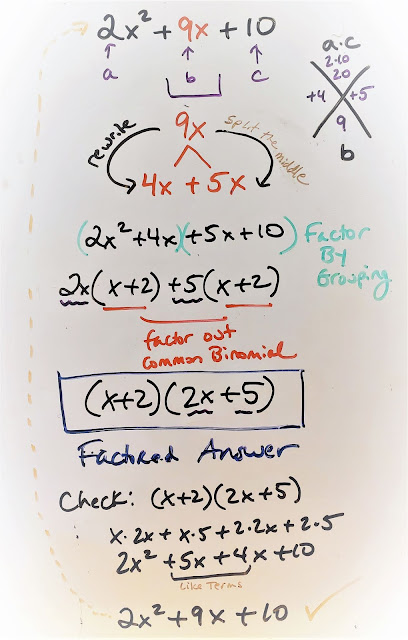Topics for Today:
We are back to pattern recognition for factoring. When we multiplied binomials by squaring them or by multiplying a difference, we noted a pattern for the resulting products. Today, we worked backward from the trinomial (in the case of perfect square trinomials) or the binomial (in the case of difference of squares) to determine the two binomial factors.
Students are reminded that now would be a good time to memorize the common perfect squares. We also talked about square roots in the context of being the opposite of squaring numbers. We'll deal with radicals a little later on, in May.
For perfect square trinomials, students should be asking the questions:
- Is the first variable term a perfect square?
- If yes, is the constant term a perfect square?
- If yes, is the middle term equal to two times the square roots of the first and third terms?
What about factoring difference of squares? We have another pattern to follow for this type of polynomial. For the difference of squares, students should be asking the questions:
- Is the variable piece a perfect square?
- Is the constant piece a perfect square?
- Is the operation being performed subtraction?
Sections Covered in Textbook:
9-7: Factoring Special Cases
Resources & Tutorials:
1)
How to use a shortcut to factor a perfect square trinomial
2)
How do you factor using the difference of squares









